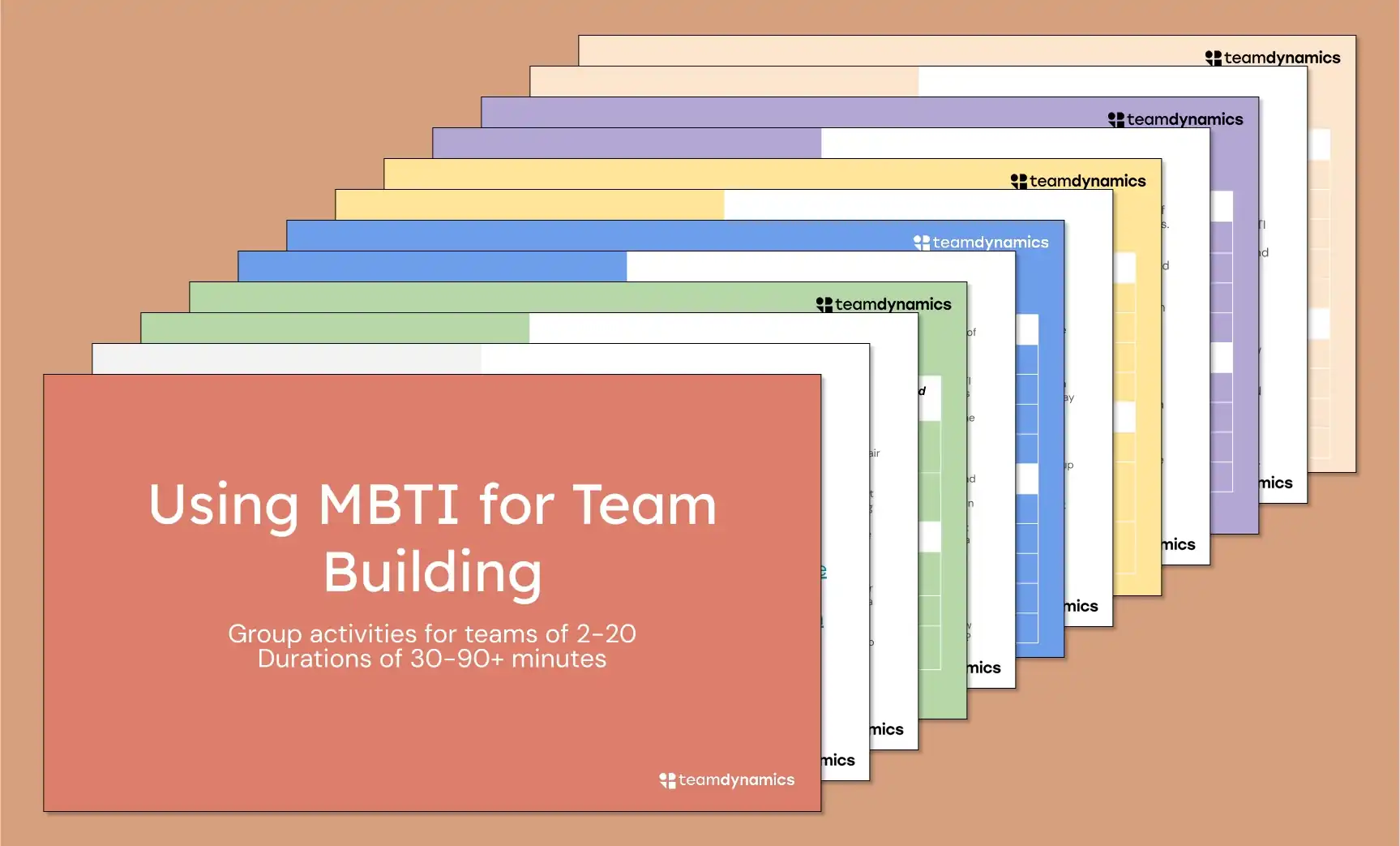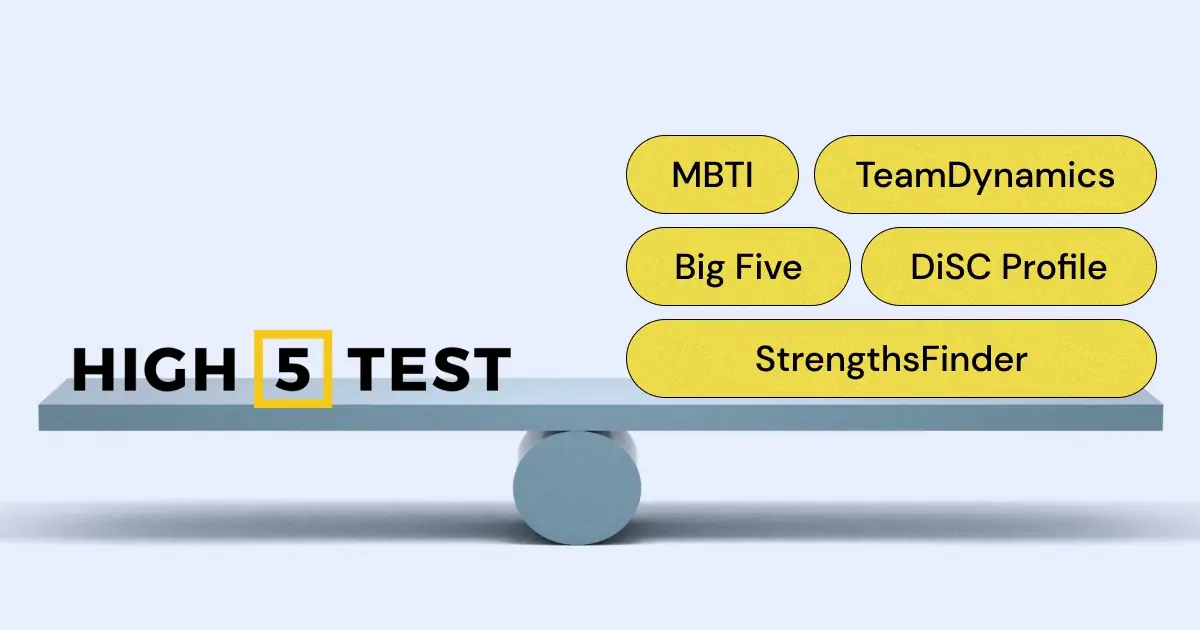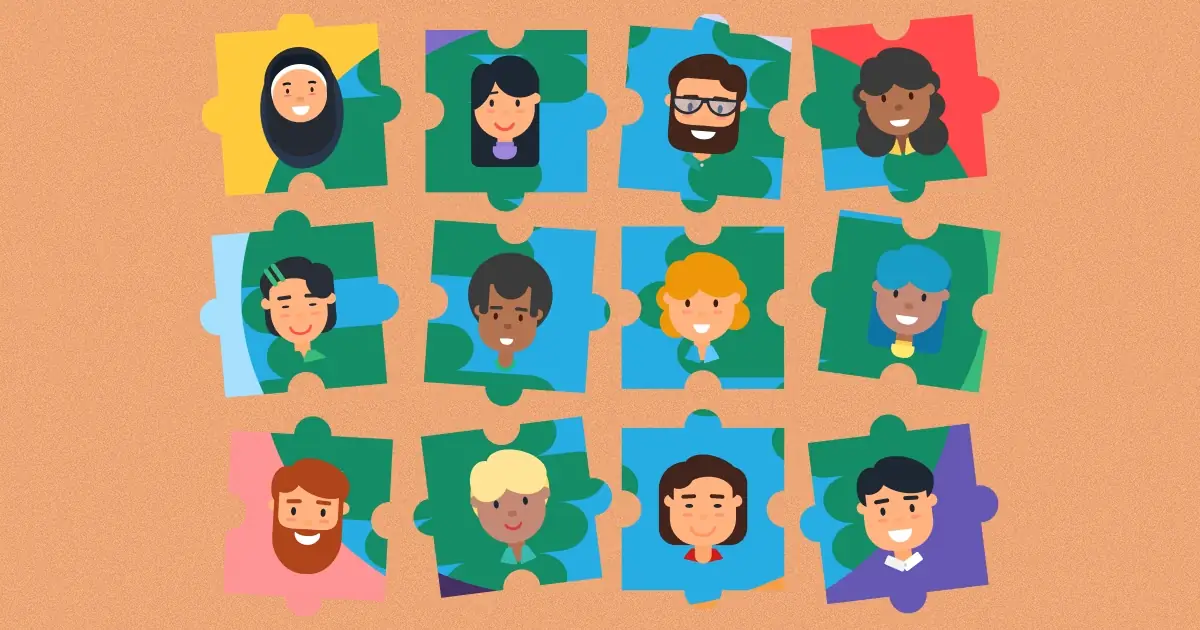Ever taken the MBTI Personality Test and wondered, "What's next?" Well, you're in the right place! We're about to dive into the exciting world of understanding MBTI and how it can truly make a difference in how your team makes decisions.
The MBTI Personality Test, short for Myers-Briggs Type Indicator, is a popular tool used worldwide to help people understand their unique personality traits. Think of it as a map, helping you understand yourself and others a bit better. It categorizes people into 16 distinct types based on four dichotomies: extroversion vs. introversion, sensing vs. intuition, thinking vs. feeling, and judging vs. perceiving.
But the real magic happens when you start using these MBTI results in a team environment. Understanding the different personality types within your group can seriously enhance your team's decision-making process. Think of it as a cheat code for knowing how your team works best together.
Learn how teams make better decisions together.
For example, an introverted team member might prefer to think things over and write down their ideas, while an extroverted one might thrive on group discussions. By knowing this, you can tailor your decision-making methods to suit everyone's needs, making the process smoother and more effective.
So, stick with us as we dive deeper into the fascinating journey of using MBTI to amp up your team decision-making skills! Stay tuned.
{{inline-cta}}
The 16 Personality Types in MBTI
Let's talk about the heart of the MBTI Personality Test: the 16 MBTI personality types. These types are a blend of four pairs of personality traits: Extroversion (E) or Introversion (I), Sensing (S) or Intuition (N), Thinking (T) or Feeling (F), and Judging (J) or Perceiving (P).
Here's a simple breakdown of the traits:
- Introverts (I): They prefer quiet, alone time to recharge and think.
- Extroverts (E): They gain energy from social interactions and active environments.
- Sensors (S): They focus on real, tangible data and tend to be practical.
- Intuitives (N): They look at the big picture, focus on future possibilities, and love abstract ideas.
- Thinkers (T): They make decisions based on logic and objective analysis.
- Feelers (F): They consider personal and social values to make decisions.
- Judgers (J): They prefer structure, schedules, and planning.
- Perceivers (P): They prefer spontaneity and keeping their options open.
Combining these traits, we get the 16 MBTI personality types. For instance, someone could be an INTJ (Introverted, Intuitive, Thinking, Judging) or an ESFP (Extroverted, Sensing, Feeling, Perceiving). Each type has a unique way of thinking and processing information.
Now, let's paint a picture with a real-life example. Let's say we have a team of four: an INTJ, ESFP, ISTP, and ENFJ.
The INTJ might prefer a systematic approach and careful planning for a project. The ESFP could bring creativity and spontaneity to the table, while the ISTP provides practical solutions to potential problems. The ENFJ, on the other hand, can ensure harmony in the team, considering each member's feelings in decision-making.
By understanding these different personality types, the team can balance each other out, leading to more effective and harmonious decision-making. We'll delve deeper into this fascinating interplay in the upcoming sections, so keep reading!
Understanding MBTI and Decision Making
Now that we're familiar with the 16 MBTI personality types, let's take a closer look at how they can impact decision making in your team. Understanding the relationship between MBTI and decision making can be a real game-changer!
Each personality type has a unique decision-making style. For instance, Thinkers (T) often base their decisions on facts and logic, while Feelers (F) tend to consider people's feelings and values. Similarly, Judgers (J) might prefer making decisions quickly and sticking to them, while Perceivers (P) might want to explore all options before deciding.
Let's take a peek into a professional working environment to understand this better.
Imagine a team working on a project with a tight deadline. An ISTJ member (Introverted, Sensing, Thinking, Judging) might prefer to rely on past experiences and proven methods to quickly come up with a plan, considering the deadline. They'd likely make a structured timetable and stick to it.
On the other hand, an ENFP (Extroverted, Intuitive, Feeling, Perceiving) team member might advocate for brainstorming creative, out-of-the-box solutions, even if it takes more time. They would want to consider the impact of their decision on everyone in the team.
When these different decision-making styles come together, it can either lead to conflict or complement each other. The ISTJ's practicality can balance the ENFP's idealism, and vice versa, leading to decisions that are both efficient and considerate.
The key is understanding these different MBTI decision-making styles and creating an environment where everyone's approach is valued and utilized effectively. Stay tuned to learn more about how you can achieve this balance in your team!
{{inline-cta}}
Benefits of Understanding MBTI in Team Decision Making
The real power of the MBTI Personality Test becomes clear when we see its benefits in team decision-making. Let's take a deeper dive into how understanding MBTI can be a catalyst for improving your team's decision-making process.
One significant benefit of MBTI is that it allows everyone in the team to appreciate the diversity of thought. This can lead to a richer range of ideas, more balanced decisions, and a more inclusive team environment. Moreover, it can minimize conflicts by helping team members understand and respect different viewpoints.
A great illustration of these benefits comes from a case study of an IT team in a medium-sized company. Initially, the team had frequent disagreements and struggled to meet project deadlines. After a workshop where they learned about their MBTI results, things started to change.
The team consisted of ISTJs who preferred a systematic approach, ENFPs who brought creative solutions, and ESFJs who prioritized the team's harmony. Before understanding MBTI, their different decision-making styles often clashed. However, once they realized these differences stemmed from their unique personality types, they started seeing them as strengths rather than obstacles.
For instance, the ISTJs began to value the innovative ideas of the ENFPs, while the ENFPs appreciated the structure that ISTJs brought. The ESFJs played a crucial role in mediating between these styles and ensuring everyone's viewpoint was considered. Over time, they reported improved team dynamics, fewer conflicts, and timely project completion.
This MBTI success story shows how understanding personality types can bring about significant team improvement. In the following section, we'll guide you on how to use MBTI results to foster better decision making in your team, so stay tuned!
How to Use MBTI Results for Better Decision Making in Your Team
The magic of the MBTI Personality Test lies not only in understanding it but also in using MBTI results effectively. Here's a step-by-step guide to improve your team's decision-making process using MBTI:
Step 1: Understand Each Team Member's MBTI Type
Firstly, everyone in the team needs to know their MBTI type. This knowledge forms the foundation for understanding each other's strengths, weaknesses, and decision-making styles.
Step 2: Share and Discuss MBTI Types
Next, encourage each member to share and discuss their MBTI type. This can foster understanding and respect for different perspectives within the team.
Looking to use MBTI for team building? Download these free templates for MBTI team building workshops!
Step 3: Adapt Decision-Making Process
Based on your team's MBTI types, adapt your decision-making process to suit everyone. This might mean accommodating for introverted team members to express their thoughts in writing or allowing enough brainstorming time for intuitive types.
Step 4: Practice and Adjust
Put the new decision-making process into practice. Keep an open mind and adjust the process as needed based on feedback from the team.
Now, let's look at an example of a marketing team putting this guide into action.
The team comprised a mix of ESTJs who liked to make quick decisions, INFPs who thrived on exploring multiple creative solutions, and ISFJs who cared deeply about the team's harmony. Using their MBTI results, they adjusted their decision-making process.
They started by allowing time for the INFPs to brainstorm creative ideas. The ESTJs, on the other hand, took on the responsibility of driving the team towards a decision once all ideas were on the table. The ISFJs played a crucial role in ensuring everyone's voices were heard and considered during the decision-making process.
The result was a more efficient and harmonious decision-making process, leading to more successful marketing campaigns. This shows the practical MBTI application in real-life and its potential to transform your team's decision-making!
The right tools can make team chemistry tangible and actionable
Myers-Briggs is a great individual personality test. It’s simple, descriptive, positive, and widely known. Millions of people use it every year to understand themselves and individuals around them. However, the key to getting the most out of MBTI is knowing when to use it, and when not to use it.
If you find yourself asking, “How does my team really make decisions” or “How do we make better decisions as a team?” and you’re asking about more than a pair of individuals, you might consider looking for another behavioral assessment. Consider TeamDynamics, which is built to assess how modern teams work together to get work done.
Team decision-making might seem like something magical or mysterious. However, with the right tools, you can measure it, manage it, and make it better!
Looking for alternatives to MBTI? Here a look at the top 5 MBTI alternatives.
Conclusion
As we've navigated the fascinating waters of the MBTI Personality Test, we've learned how it can illuminate the path to improving your team's decision-making process. Understanding and applying MBTI results to team dynamics can be transformative, fostering respect for diverse thinking styles, reducing conflicts, and enhancing overall team performance.
To recap, we've seen that the 16 MBTI personality types each bring unique perspectives and strengths to the table. Whether you're an Introvert or an Extrovert, a Thinker or a Feeler, each type has a distinctive approach to decision making. By acknowledging these differences, we can create a more inclusive and effective decision-making environment.
We've explored real-life examples of teams putting their MBTI knowledge into practice, from a tech team to a marketing group. These examples show that understanding and applying MBTI can turn decision-making struggles into successes, leading to improved team dynamics and better project outcomes.
So, what's next? It's your turn to discover the power of MBTI! If you haven't taken the MBTI Personality Test yet, we strongly encourage you to do so. And if you have, start using your results to transform your team's decision-making process. Remember, the goal isn't to change who you are or who your team members are but to embrace each other's uniqueness.
As you embark on this exciting journey, remember that the MBTI is a tool. It's not a definitive measure of who you are, but a guide to understanding yourself and others better. Use it wisely, and you'll see your team decision-making elevate to new heights.
Thank you for joining us on this exploration of MBTI and team decision-making. We look forward to helping you navigate more exciting topics to enhance your team performance!
Check out our other MBTI resources!
We hope you've found this guide useful. Remember, everyone's experience is unique, and it's about finding strategies that work best for you. If you enjoyed reading this, don't keep it to yourself! Share it with your friends, colleagues, or anyone you think could benefit from it. Let's create a more understanding and inclusive workplace together!
MBTI is one of the most popular personality tests, and people are always asking us how they can better use it with their teams. Here are a few other useful articles you can try:
And if you're looking to crack the code on working with a specific MBTI type, check out our guides written just for you:
Interested in diving deeper into personality types, teamwork, and team performance? We've got a treasure trove of insightful articles just waiting for you to explore. Check out our other blogs on topics like team dynamics, effective communication strategies, and more in-depth dives into different personality tests. And check back often - we're always publishing more great content!




.png)










































